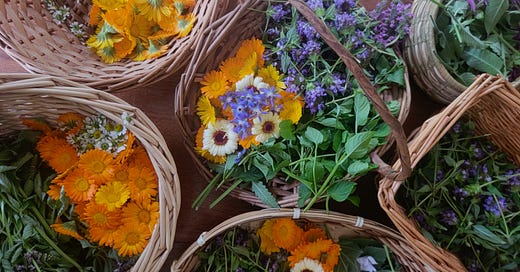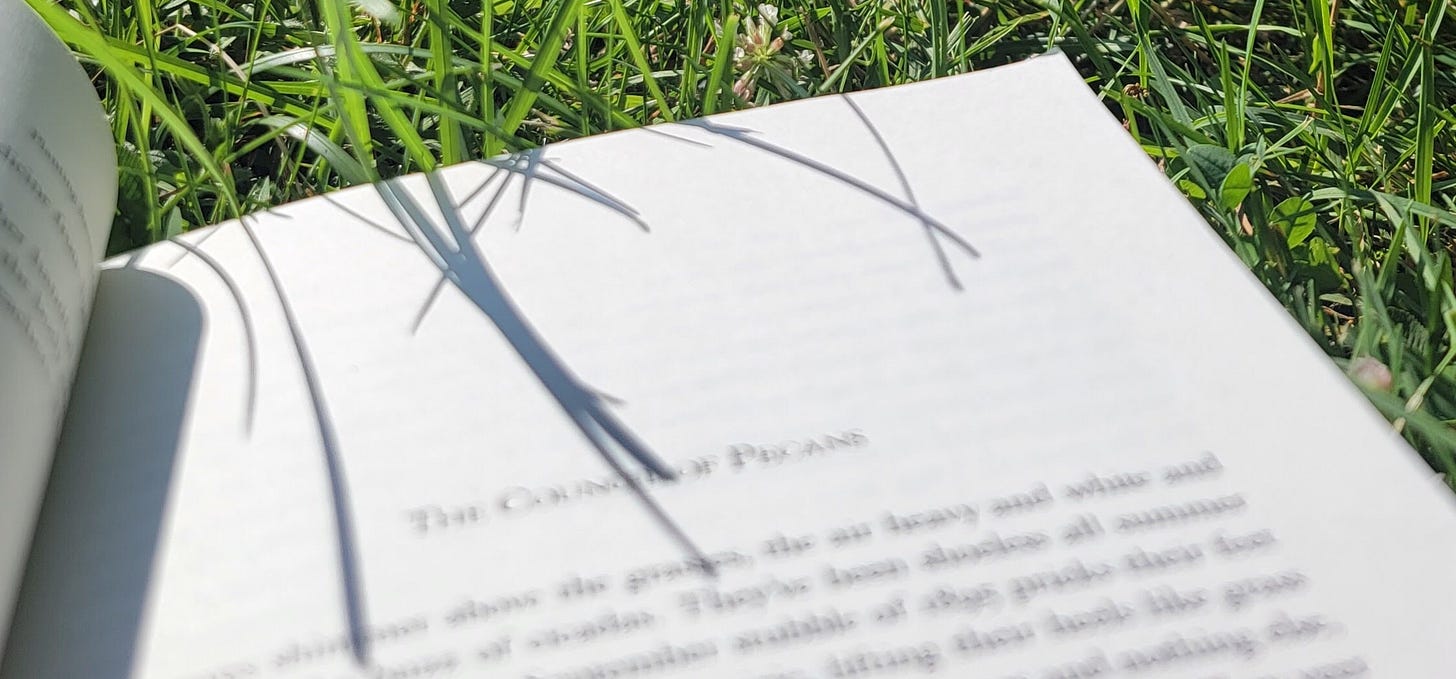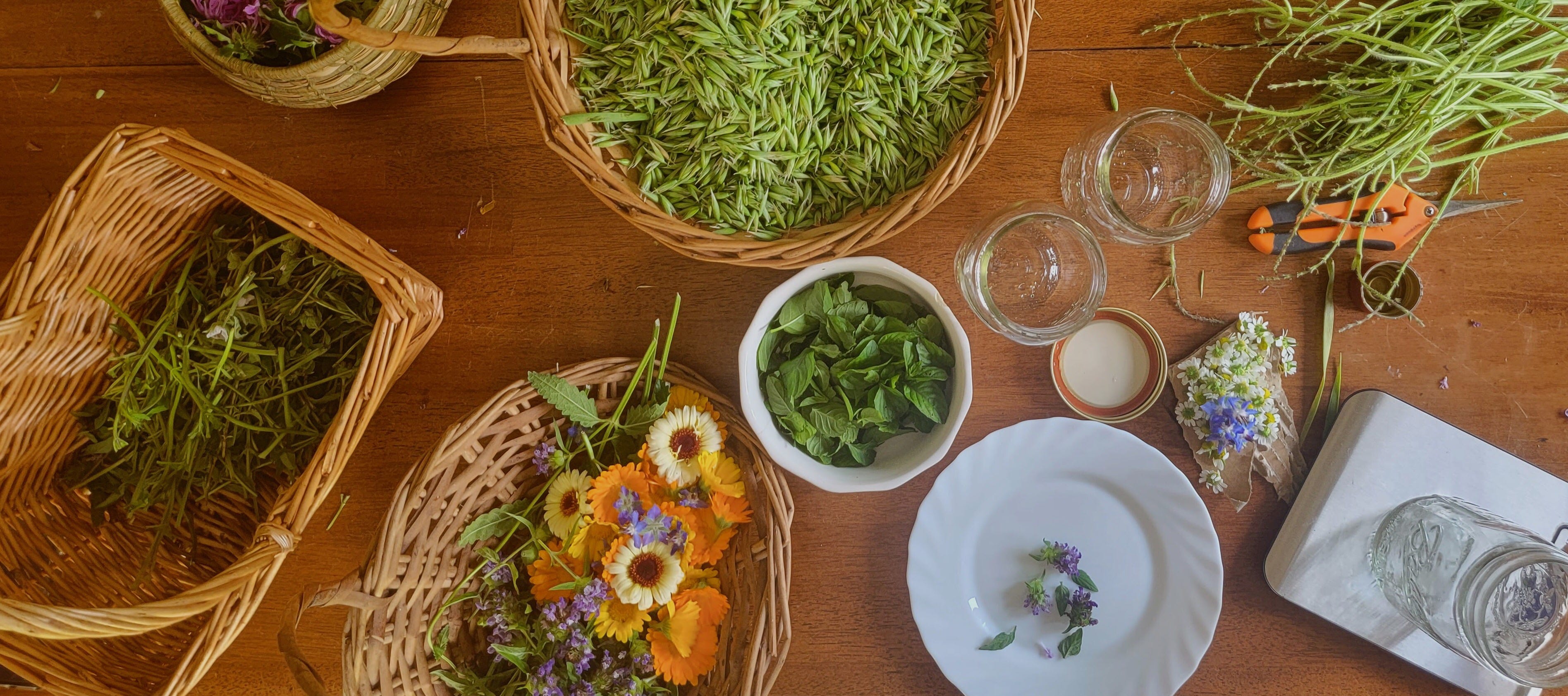I am currently making my way through Stockholm, Copenhagen, and Berlin On the way to my next farm in Italy. By a coincidental turn of events, my brother and sister in law, Ryan and Lauren, are in Copenhagen while I am here to celebrate their Anniversary. And my friend and Brooklyn roomemate, Codie, is in Berlin after taking a last minute apartment swap for the fall. So lots of fun to travel with family and friends this week.
While I started the blog when I headed to Norway -
My farming journey started a few weeks prior to my EU departure at a farm in the Hudson Valley of New York. I originally looked for a farm in Upstate NY because I had pushed back my departure day for Norway and already had someone subletting my Brooklyn Apartment. While this was the impetus - I had no clue that the two weeks I would spend at surprise Hill would change my life. This might sound dramatic, But the people at surprise Hill and the farm itself, created such a powerful and positive environment, that has impacted me far beyond anything I could have expected.
The “Surprise Hill” page on the wwoof site mentioned that a couple, Ashly and Peter, ran the farm. Ashly has an Herbal Product Business, Medicine Weaver Apothecary, which is what most of the crops grown on the farm are for - as well as to provide produce for those who live and wwoof/intern at the farm. Peter is an Eco Architect and had a business where he design and constructs small scale buildings with Staw bale construction technology (check out his Company, Build with Nature here!) (more details below!). As both of these topics are extremely interesting to me, This was an obvious first choice farm for me.
After reaching out on the wwoof site, Ashley replied and asked to set up a phone call to chat a little and see if we though it would be a good fit for us both. Immediately after getting on the phone with her, I could tell that if I went, it would be a good experience. She was warm and welcoming while also talking about the needs of the farm and what would be expected of me. We agreed on that call that I would come to the farm for the middle two weeks of July and I booked my Metro North train tickets from Penn Station to the Hudson Stop soon after.
I arrived to the Hudson Train Stop
- amidst a pouring rain and was picked up by Caterina, An intern at the farm who had returned for her third Summer at Surprise Hill. She was in her final year of Herbal School at a prominent school for these studies in a nearby Hudson Valley town. She was immediately very friendly and we chatted easily for the 30 minute drive to the farm. Approaching the farm, I was a little nervous. I did not really know what this wwoofing thing was, I was out of my element, and had heard some wwoofing horror stories… frankly I was very aware that this could be one of them. On top of this, it was still raining and I had not brought an umbrella with me. Upon arrival though, all fears were swayed. As we pulled up to the driveway, Ashley and Bella, her almost teenage daughter, came out to the porch to greet us. I was met with warm, comforting, “real”, hugs from each and was instantly put at ease. After the initial greeting in the rain, Ashley looked at me and said - “you won’t melt right? Let’s go on a tour of the farm.” (While NYC Callie from a few hours before probably would have melted, farm Callie had no options, get wet or feel extremely silly. While I love being silly. Feeling silly is a totally different story.) So I smiled, grabbed my backpack out of Caterina’s Jeep, and followed the others to show me where I would be staying and on a farm tour.
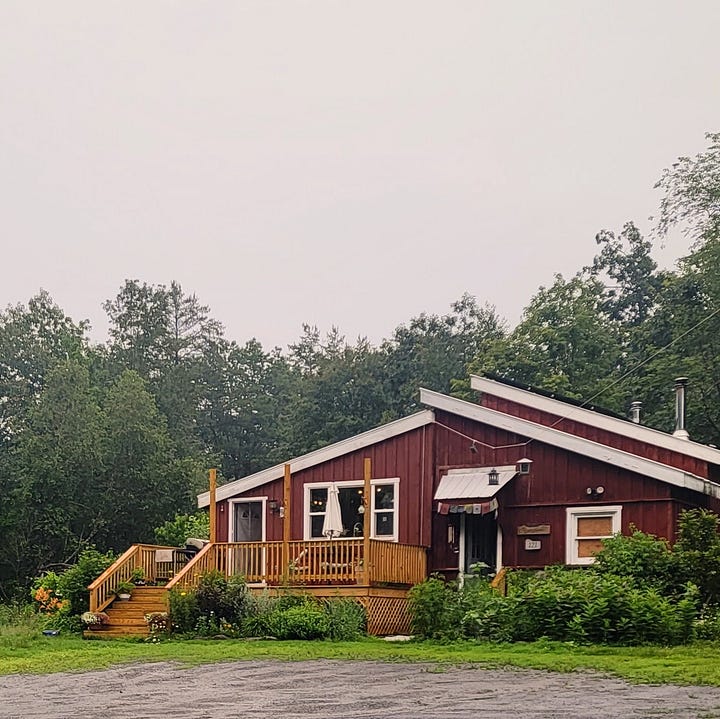
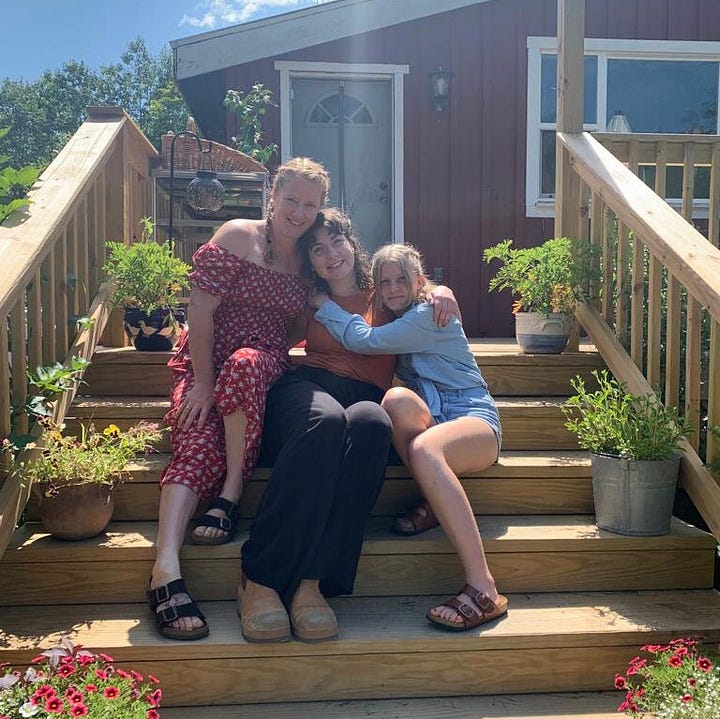
After the tour Ashley told me that dinner would be ready in 30 minutes and to take a few minutes to get settled into the RV I would call home for the next two weeks. After this little reprieve, I made my way back to the farmhouse for the first of what would be many incredible and delicious meals shared at the family table. Peter arrived to the farm in time for dinner and at it was at this moment that I realized that he is the sweetest, kindest, man I have ever had the privilege of meeting. Through this meal I experienced Ashely and Peter’s supreme empathy, kindness, gentleness and general goodness. I knew at this point that I was in good hands and all the fear leading up to my arrival had been for naught. After a warm meal, guitar singalong led by Bella, and romcom movie night ( a staple during summer nights for Bella and Caterina) I headed back to my RV, excited for the two weeks to come.
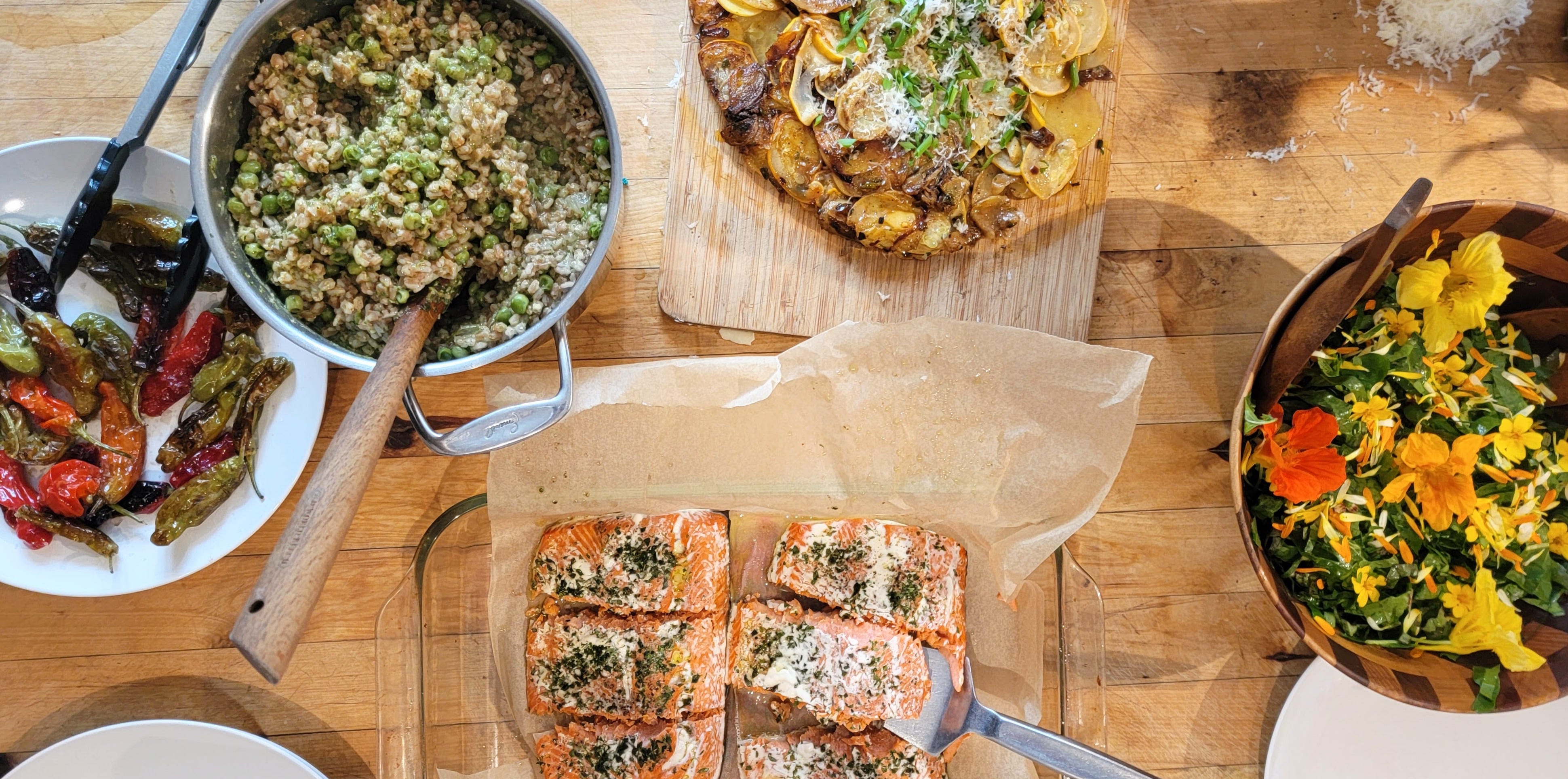
The next two weeks would be the start of my farming journey and upon reflection, I don’t think there could have been a better place to begin. While the work was enjoyable and fulfilling, the conversation I had during this time are ones that will stick with me for a long, long, time. Ashley, Catterina, and I worked together for five to six hour per day planting trees and shrubs, harvesting flowers, weeding, all while they both shared their knowledge of the land. Ashley with deep understanding of all things requiring a green thumb and a wisdom that seemed to come straight from the earth. Catterina sharing her love and knowledge of herbal plants, medicines and how to properly treat common ailments with natural ingredients.

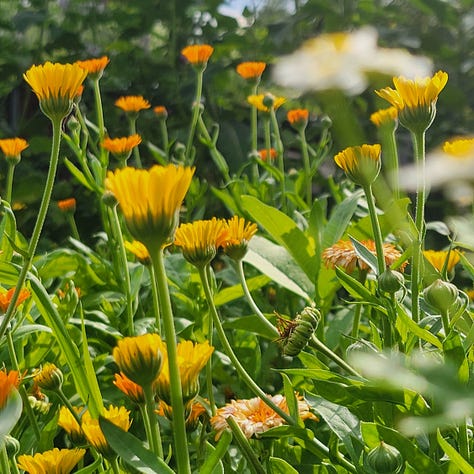
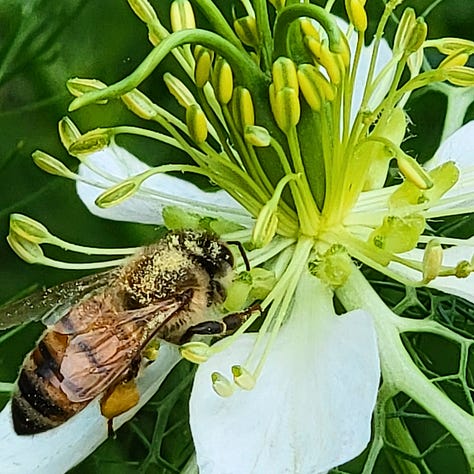
Along side many conversations about soil regeneration, closed loop production, and the latest compost trends - I was also reading the book, Braiding Sweetgrass, while I was at the farm. While this book had been coming highly recommended for the last year or so, I did not get a chance to read it until I was at the farm and funnily enough matched perfectly to all the lessons I was learning. The Auther, Robin Wall Kimmerer, has Native American heritage from the Potawatomi tribe, a PHD in Biology, and is a published poet. This makes for a book rich in history, scientific facts, and beautifully written stories about how to care for the earth and other wisdom regarding ecosystems of all kinds. Coincidentally, Kimmerer, also lives in upstate New York, reading the book geographically close to where these stories originate was also a unique and intimate way to experience the book. One of the best things I took from the book, that we also practiced on the farm, is the art of the Honorable harvest. While there are no specific guidelines for this practices this quote from the Author sums it up beautifully.
“Take only what you need and leave some for others. Use everything that you take. Take only that which is given to you. Share it, as the Earth has shared with you.”
These are principals that are not thought of often in western culture where it is best to take as much as you can, as quickly as you can and stock up on a goods as if there were no tomorrow. But I think they are a needed guideline in order to respect the earth, and take care of the ecosystems that take care of us.
While the conversations were interesting and thought provoking the work itself was very fulfilling. Aside from a photo shoot or two in the last few years at my job - the amount of physical labor I have participated in is close to zero. So getting my hands dirty and muscles soar hit a dopamine note that I didn’t realize I was craving. Some of the main tasks that I got into are highlighted below.
General Gardening - pruning / transplanting / weeding / harvesting
While I have done a bit of gardening in the past it was here at the farm where I would see the vegetables we were caring for, care for us later at the dinner table that started to understand the passion of the garden that many people I know have. Learning proper techniques for all of these things is not only important to growing a thriving garden but also provides lessons that I found parallel life lessons of care and wisdom. As Ashley told me ”the garden has been my greatest teacher” A few gems from her as we we planted, fertilized, weeded, transplanted and harvested below.
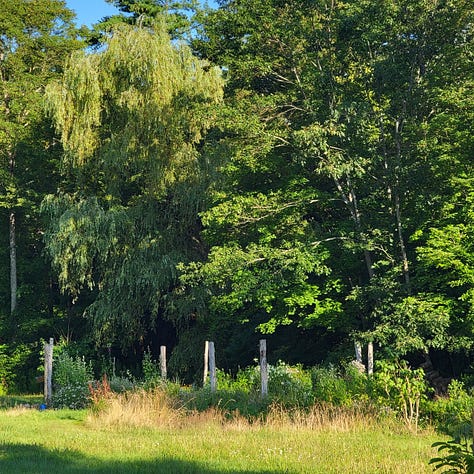
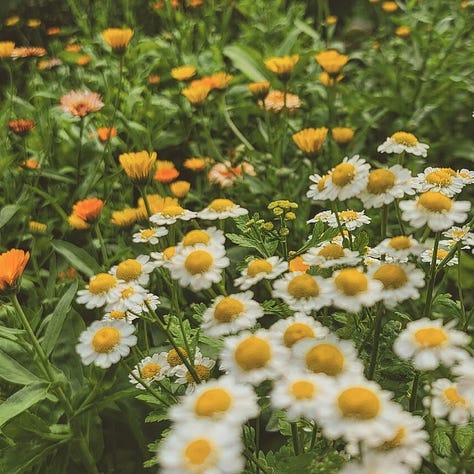
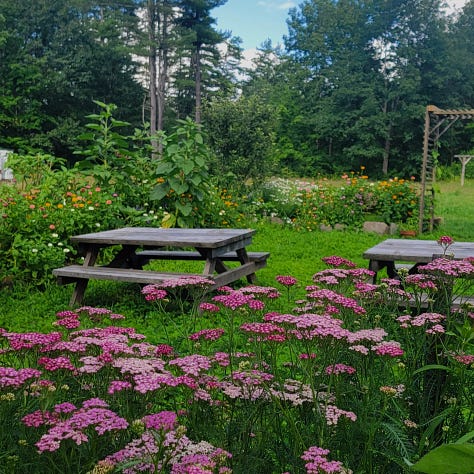
- “Everything grows better with a little support”
- “The difference between a weed and a flower is a judgment”
- “Problems are solved at the root”
- “Pruning allows for proper growth”
Harvesting Flowers
This was one of my main tasks on the farm and never in my life did I consider that “flower harvesting” was a job. There are Many blooms that are used in Herbal Medicine and teas - Calendula, Benjamin Buttons, Narshmallow, Chamomile. The most time consuming part of this task is collecting the heads of the flowers. One of these plants can have hundreds of blooms ready at a time which means lots of zen time as one by one you pinch the stem to separate the bloom. After harvesting, the baskets of flowers were taken to a sunny potting shed with stacks of mesh racks hanging from the ceiling.
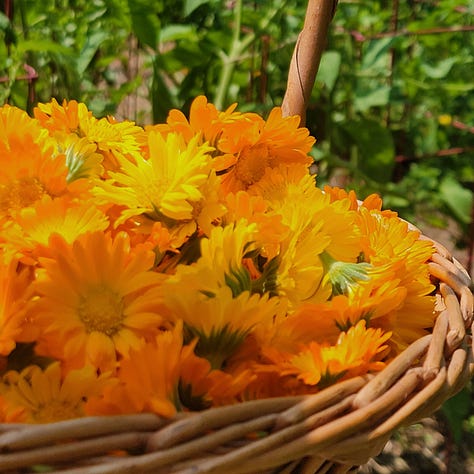

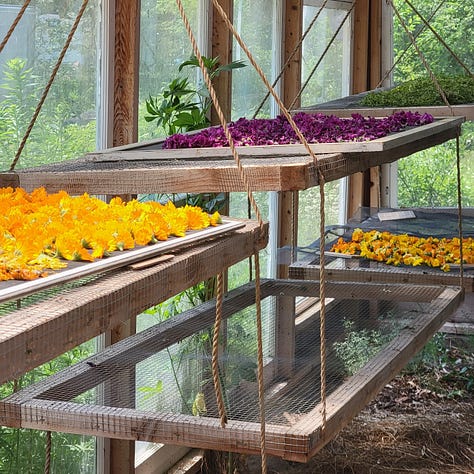
The blooms were spread evenly on the racks and were left to dry anywhere from one day to one week depending on how much moisture was in the bloom. This step is crucial as if there is any residual moisture left in the blooms when packaged, the whole lot can rot and all the work of the earth growing, and the farmer planting, caring, and harvesting was for naught. Once the blooms are dried they are packaged, labeled and ready to use for products.
Making Products
Once the flower and herbs are harvested and stored, it is time to make products with them. While there are many different types of herbal products to use based on your needs, I had the opportunity to help make teas, skin care products, and tinctures (alcohol extraction plant medicines) while I was there. Making products is a bit like cooking - there are recipe cards for everything we made and after carefully sanitizing the prep area we wheighed, measured and ratio-ed herbs, flowers, essential oils, and other natural ingredients to make a full line of products. After packaging and labeling each individual item, we had a fully stocked store for Ashley to take to the farmers market the following weekend.
While I loved working on the farm, one of the most interesting days at Surprise Hill was spent…
With a visit to the build site of Peter’s current building - a 5,000 SF Buddhist temple in the Hudson Valley. I knew that peter worked with natural materials architecture but it was not until I visited the site that I understood the process. The main building technology that Peter and his crew work with is Straw Bale construction. After receiving the plans for the design of the building peter works with a Lithuanian manufacturing company to design and produce what are essentially “straw and wood legos” that arrive to the site pre-fabricated and ready to be stacked together. The way that these pre-fab blocks are engineered, the straw and wood are the structure and insulation for the building making both the construction and the sustainable properties of the building incredible efficient and practical. Once the straw structure of the building in complete and plumbing, HVAC, windows, and doors are installed - the exposed straw and wood will get covered in a lime plaster mixture that will become the finished surface.
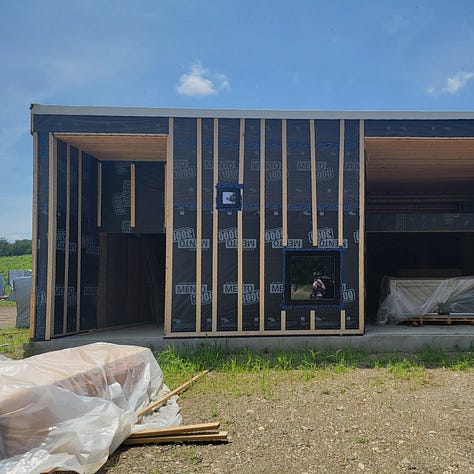

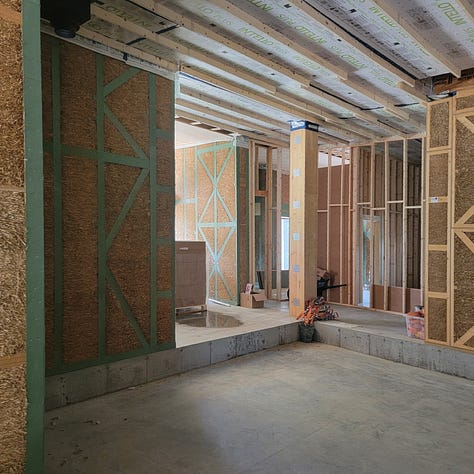
All in all it was inspiring to see the process and hear Peter discuss the work. Later when asking him how he got interested in the architectural field (he spent the first part of his professional career working as a psycho therapist) he answered that his main goal is actually to lower the worlds carbon footprint, and making a lasting change in the building industry is the way that he see’s that he can actually make scaleable change. Peter believes that carbon farming - returning more carbon back to the earth than we produce - is the best way to impact climate change on a large scale and he wants to do his part to make this an attainable goal in our world.
When not working, time at Surprise Hill was sweet, simple, and full of nostalgia.
Upon reflection, I felt as if I had a real summer for the first time in years. Summer with hot days and long nights, swimming in the creek followed by gas station ice cream. Laying in the grass reading until falling asleep in the dappled sunlight. Nights at the local drive in theater with popcorn and candy in tow. Dinners eaten in open air with all of us sharing our rose (best), Thorn (worst), and elephants (something unexpected) from the day.
Life was good - almost to good to seem real. At one point when talking to Ashley about her lifestyle I mentioned that it was amazing - but not reality. “You don’t really get to live like this in 2023”. She answered with a smile and a simple “it’s my reality”. We expanded the conversation chatting about what is “real” life. While I feel like it is easier to be in a place of privilege to have this mindset, I think it is true that life is what you make of it. The rules and expectation that society has placed on us for what career, family, and success are all a bit arbitrary. While they can be a good guideline, There is no reason to hold so tightly to an idea of life that is presented to us as “the right way”.
These are the lessons that have set up this trip for me. So far these ideas and physical practices have only been expanded on and I am sure will continue to grow as I continue to travel, farm, and meet people who are constantly expanding my view of the world.

